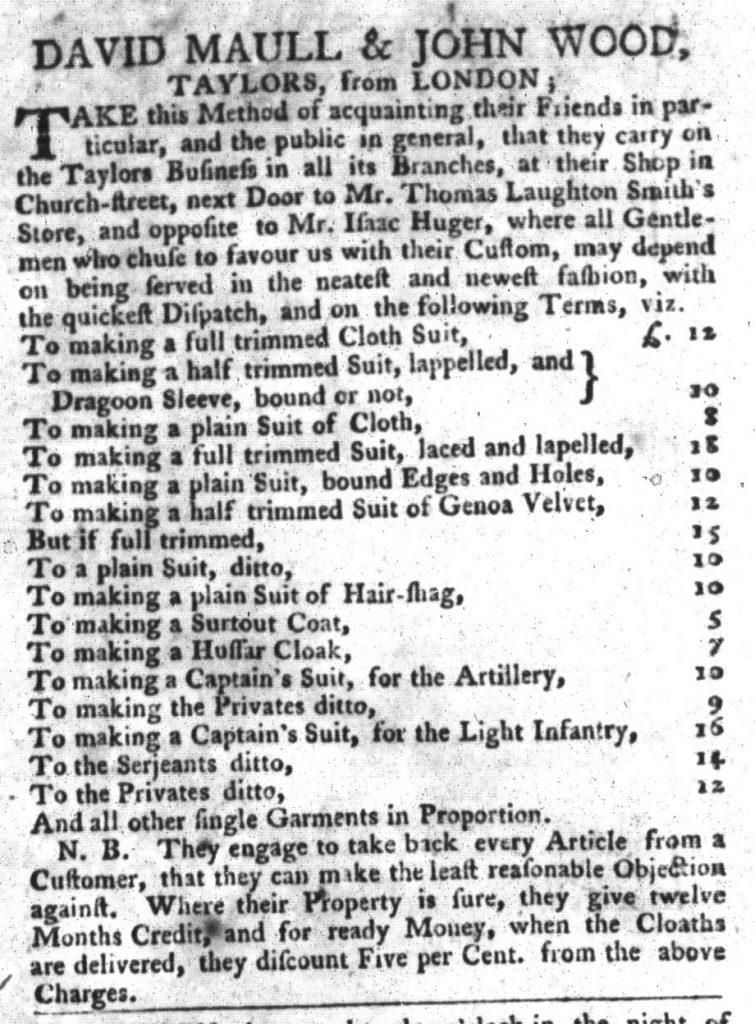What was advertised in a colonial American newspaper 250 years ago today?

“They carry on the Taylors Business in all its Branches.”
David Maull and John Wood’s advertisement was one of nearly a dozen that appeared in the two-page Addition to the South-Carolina Gazette and Country Journal published by Charles Crouch on March 8, 1768. It accompanied the regular four-page issue of that newspaper and a two-page Supplement. Crouch distributed supplements so often that many readers may have come to expect them as standard, made necessary by the number of advertisements submitted to the printing office. Indeed, the supplements usually contained advertising exclusively, even when advertisements accounted for nearly half of the space in regular issues.
The Addition, however, did not follow this pattern. Only two of the six columns (three on each side of the halfsheet) were filled with advertising. The ninth of John Dickinson’s “LETTERS from a FARMER in PENNSYLVANIA, to the Inhabitants of the BRITISH COLONIES” occupied nearly the entire first page. In it, the “FARMER” explained the necessity of local representation in firmly established assemblies. The Addition also included news from Boston and Philadelphia as well as a poem, “The Batchelor’s Reasons for taking a Wife.”
What Crouch termed an Addition his counterparts in other cities and towns usually called an Extraordinary in their efforts to distinguish such publications from the more common supplements often distributed with the standard issues of their newspapers. Whatever the nomenclature, Crouch’s Addition of March 8, 1768, further establishes a pattern. During the period of the imperial crisis between the imposition of the Stamp Act in 1765 and the outbreak of military hostilities in 1775, the colonies alternately experienced periods of intense discord with Britain and periods of relative calm. In early March 1768 the Townshend Act had been in effect for just over three months. Colonists had commenced non-importation agreements at the beginning of the year. From New England to Georgia, newspapers reported discontent and political outrage, often in supplements and extraordinary issues that proliferated during those times that the imperial crisis intensified.
At most times advertising, especially the revenue it generated for printers, facilitated the dissemination of news and editorial items. Supplements devoted to advertising made delivering the news and other content possible. During periods of conflict, however, publishing the news sometimes led to the broader or more frequent distribution of advertising. Such appears to have been the case with Crouch’s Addition from March 8, 1768. As he went about publishing Dickinson’s “LETTER IX” and news from Boston and Philadelphia, the printer needed to fill an entire halfsheet. The poem took up half a column. Two of the advertisements promoted the printer’s own wares, but the others had previously appeared as paid notices. Perhaps those who placed them paid for this insertion as well. Even if that were the case, the Addition upended the usual relationships between news and advertisements in colonial newspapers. In this case, publishing the news led to readers being exposed to more advertising rather than the usual situation of advertising bringing the news.
